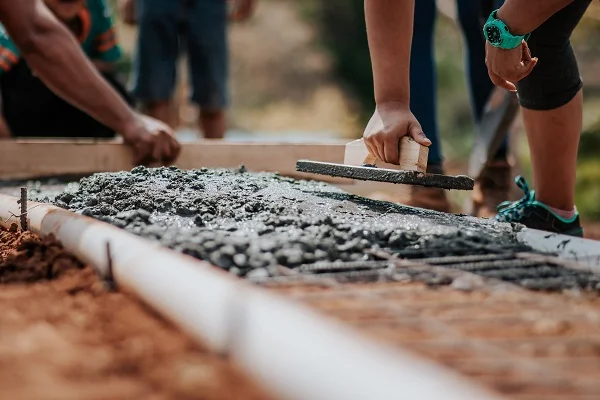Cost of Materials and Labour Spells Disaster for Self-Build Boom in the UK

It’s everyone’s dream to have a home built specifically for them. Designed with lifestyle and taste in mind, home builds have proved to be very popular over recent years.
More recently, spiralling inflation and shortages in materials and labour, alongside the war in Ukraine, have caused the costs of building a new home to skyrocket. With most of the most commonly used materials used for construction rapidly increasing in price, developing and building properties are set to take a downturn across Britain.
Neil Rogers of Honeywood Joinery, a carpentry business in Newcastle-under-Lyme, says: ‘I was told by my local merchants that if you’re pricing up a job and it’s longer than a month away, add another 15 to 20 per cent for more timber inflation.’
With the announcement from British Steel of a 25% hike in prices on some of their products, it isn’t surprising that developers and individuals are being more cautious when costing up development projects. Cement companies have reported an eleven per cent reduction in the production of cement, signifying a lowering in demand.
According to data from the National Federation of Roofing Contractors, around 60% of roofing firms have increased their charges.
Figures provided by the Department for Business, Energy, and Industry Strategy show that there has been a massive 21% increase in general materials in the last year. This data was calculated before the onset of the Ukraine war and the energy crisis, meaning prices can be expected to continue on an upward trajectory for some time to come.
So, whether you are doing a self-build or just a modest extension, price rises are sure to make your eyes water.
According to a price comparison site, roof tiles have risen by a whopping 24%, underfloor heating by 15%, and loft conversions by 20% over the last 12 months. Plywood is 44% more expensive, and uPVC has soured by 42%.
The most shocking of all price increases has to be for rolled sheet joists, which have risen by an unbelievable 82%.
Mike Fairman, the chief executive of Checkatrade, said: ‘The current global raw material shortage has had a profound impact on the UK trade and construction industry.
Soaring demand, the impact of Brexit, continued pandemic recovery, and shock factors like forest fires in North America are all reasons behind the shortages.
These massive increases are leading to a rapid decline in the growth of the self-build market. Analysis by estate agency Savills reveals that between 7 and 10% of all homes built in the UK are self-built, equating to around 130,000 per year. The government has plans to increase this to between 30,000 and 40,000 annually and has requested that councils keep a register of self-builders who are looking to purchase plots to develop. The aim is to use spare land that can be developed and offered to those on the register; however, the uptake has been somewhat patchy.
But dreams of your perfect self-build do not need to be forgotten necessarily. Instead, it is worth considering options to keep costs down to a minimum for new builds and extensions.
Getting quotes for labour and materials before the build starts will help to realistically cost the project. Also, bear in mind that the design may cause additional costs; for example, an open-plan design will most likely need load-bearing steel, which is one of the materials that has seen the largest price increase.
Purchasing an ‘off-the-shelf’ home will likely save you some money; in other words, considering a kit-built house is an option to keep costs down. The advantage of this is that buyers are paying a one-time payment for the design, including all the materials, fixtures, and fittings.
One bit of positive news is that the government has scrapped VAT for all materials intended to make homes and properties more environmentally friendly and energy efficient.
